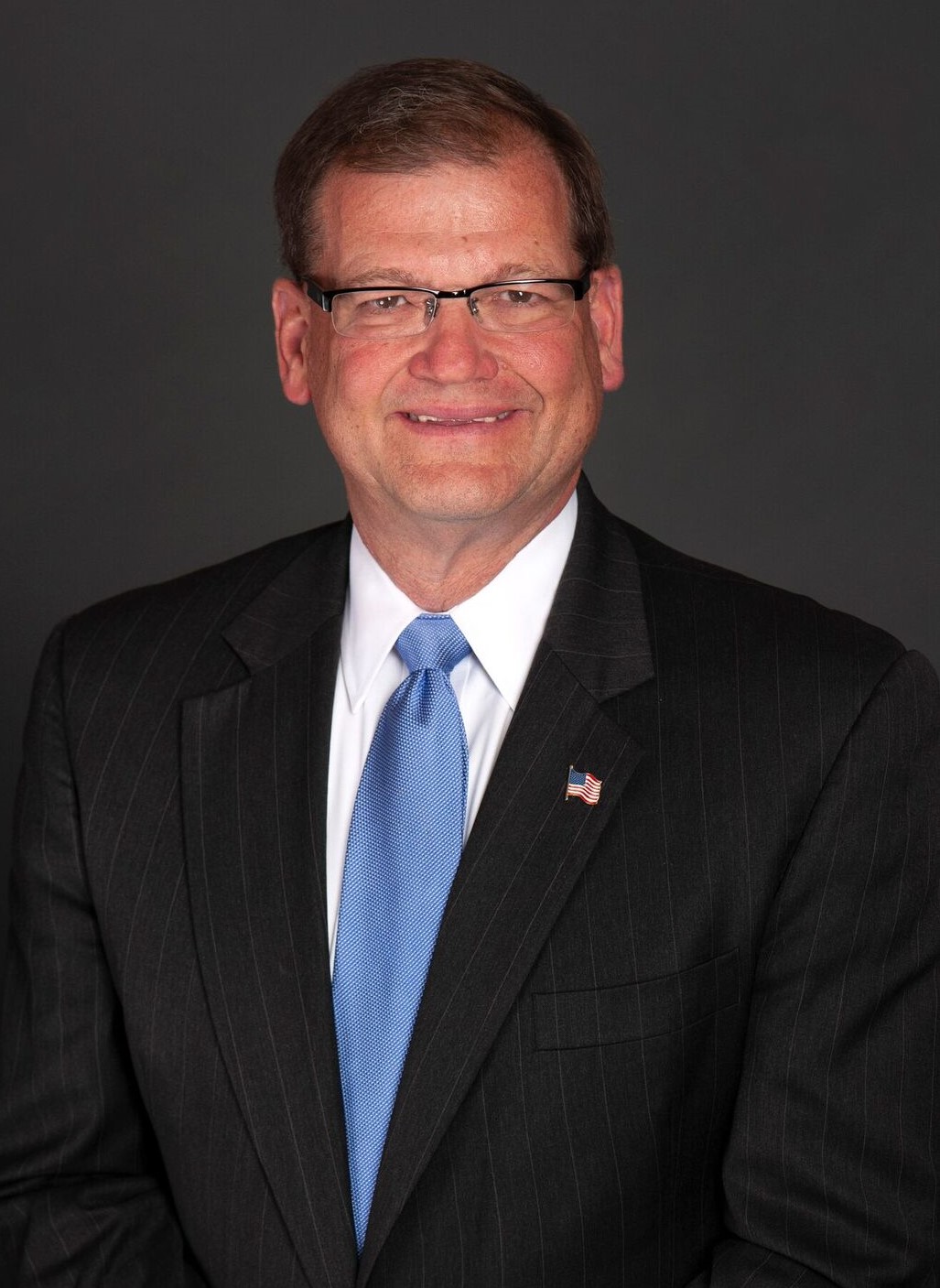
Roger Geiger: An Independent Business Perspective
Roger R. Geiger is a vice president/Ohio executive director for NFIB, managing the public policy, political, member activism and communication programs throughout the state. He also represents NFIB with national policy organizations. Mr. Geiger first joined NFIB in 1989 and has held a variety of leadership positions during his tenure. In recognition of his efforts to build the influence and clout of NFIB in Ohio, he has been consistently ranked in Smart Business Magazine’s “Power 100 Most Influential Leaders” in Columbus. He is regularly quoted in the media on issues of importance to small businesses. NFIB is a national association with chapters in all 50 states, and more than 25,000 members in Ohio – the largest state chapter in the organization.
Prior to being named vice president, Mr. Geiger served as the NFIB/Ohio State Director from 1989 – 2003. Mr. Geiger has been appointed, by four Governors, to several state boards and commissions. The most recent appointments have been to the Ohio Commission to Reform Medicaid, the Ohio Sunset Review Committee (a review of all state boards and commissions), and the Ohio Bureau of Workers’ Compensation Nominating Council. He has often testified before committees of the Ohio legislature and the U.S. Congress, and before regulatory agencies.
Before joining NFIB, Mr. Geiger served as Manager of Governmental Affairs for Browning- Ferris Industries of Ohio. He also served as a Legislative Assistant in the Ohio House of Representatives for almost five years. Mr. Geiger is a native of Marion, Ohio. He completed his undergraduate studies at Xavier University in Cincinnati and holds a bachelor’s degree in Political Science and History, and has a masters’ degree, in Business Administration, from The Ohio State University.
Roger, thanks for joining us today. Your work with the National Federation of Independent Business (NFIB) gives you a unique and important perspective among the guests we have had.
Russ: I think a lot of people think of mom and pop storefronts when they think of small businesses. While government and private organizations have broader definitions they also have differing standards or definitions for what constitutes a small business that suit their organizational purpose, governing statutes, mission, and other factors. How does NFIB define a small business?
Roger: For the purpose of NFIB membership you must be independently held and for profit – those are the only two criteria for membership. NFIB’s membership cuts the small business community’s demographics by size, type and location. A typical NFIB member is a private business enterprise that employees 25 or fewer people and has $1.5 million or less in gross revenue sales. We represent what typically looks like “main street” USA.
There are no standard definitions of a small business but the most common definition that is used is the SBA’s definition it uses for its loan programs – 100 or few employees unless in manufacturing then it is 500 or few fewer employees.
Some interesting stats on small businesses:
- 90% of all business’ employ100 or fewer and 8 out of 10 employ 25 or fewer
- There are more than 30 million self-employed Americans – the smallest of small businesses
- 70% of all Americans got their first paycheck from a small business owner
- Almost 50% of all non-government jobs are provided by small businesses
- The fastest growing segment of the business community in America are businesses owned by women and minorities
- 75% of all small business owners operate their business within 50 miles of where they grew up
- The average start-up cost for a small business is about $10,000 (usually financed by personal credit cards)
Russ: What would you like our readers to know and understand about the history of NFIB?
Roger: NFIB is a 501 (C) 6 professional business organization that was founded by a group of California entrepreneurs, in 1943, who felt that big business, big labor and big government needed to make room at the public policy debate tables for small businesses. Today NFIB is the nation’s largest advocacy organization exclusively representing independent business owners,with more than 300,000 members nationwide and chapters in all 50 states. The primary mission of the organization is to be “the voice of small business” in Washington, DC and all fifty state capitols.
Russ: What distinguishes NFIB from other small business organizations. What issues do you concentrate on and what services do you provide your members?
Roger: Three unique features of NFIB that separate us from most other business groups:
- We are made up exclusively of independent for profit business enterprises
- Our members get to set their annual dues between a minimum and a maximum amount, with dues capped, so no one company has controlling financial influence
- Each member is entitled to one vote to set organizational public policy positions. Every issue NFIB engages in, at the state or federal level, has been set by a survey of its members
The issues can vary at the federal and state levels, but generally NFIB engages in public policy debates on issues that effect a diverse range of businesses. These issues include such things as workforce development/education, the legal environment, employment and labor issues, taxes and fees, access to quality and affordable health care, state and federal business regulations, workers’ compensation, unemployment compensation, environmental regulations, reliable and affordable energy, etc.
While influencing federal and state public policy on behalf of small business owners is our primary mission, NFIB, through its member services corporation, does provide the collective buying power of our membership to provide discounts for a limited number benefits such as insurance products, credit card processing, labor posters, computer needs and shipping. In addition, through NFIB’s research and educational entity, we provide members with “how to” and compliance information, seminars and webinars. Through NFIB’s Legal Center, we provide limited legal consulting services and represent the small business community’s interests in the state and federal count systems.
Russ: I had the privilege of working with you as a representative for Washington State when the Streamlined Sales Tax Governing Board was developing policies in some key areas. My recollection is that NFIB did not have a position on collection authority, but that you nonetheless were deeply engaged in questions such as the cost of collections and definitions. What prompted your strong participation?
Roger: You are correct, NFIB does not have a policy position on Streamline Sales Tax collection. When NFIB has surveyed our membership on this issue several times in the past, we have consistently received a mixed response. For NFIB’s “bricks and mortar” small retailers this is usually an impactful issue, for the rest of NFIB membership its perceived as a non-issue or and increased tax issue. However, many of the secondary issues, within the streamline sales tax collection, have been of concern to NFIB and its members, especially small retailers. The big ones have been origin vs. destination tax collection, product definitions, small seller exemptions, and the cost and complexity of sales tax collections amongst the thousands of sales taxjurisdictions across the country for both small retail collectors and for small business consumers.
Russ: You continue to be involved with the Business Advisory Council to the Governing Board.Much of the early effort of SST was aimed at simplifying sales tax collection and compliance. What do you think were the most important things accomplished in that regard?
Roger:
- Standardization of taxable definitions – which also continues to be a challenge
- A small seller exemption which is lower than what we requested but there is at least one
- The development of competitive and robust CSPs
- The indirect “safe harbors” for small sellers who work through streamline and its infrastructure
- The slowing effect, on the part of participating states, to dramatically expand sales tax collections
Russ: What got left on the cutting room floor you now wish had gotten done?
Roger:
- A broader definition of a small seller exemption
- NFIB supported origin-based sourcing but recognize that genie is long out of the bottle
Russ: From NFIB’s perspective what are the most significant obstacles for small business success today and what should states be doing to address them?
Roger:
- A skilled workforce is the #1 issue facing small business owner across the country
- Still recovering from the shutdowns and economic slowdowns of the pandemic, the current challenges with inflation (the cost of doing business) and supply chain issues could not be happening at a worse time for small businesses
- Small businesses need predicable regulatory, tax and legal climates to thrive
Russ: In the years you have been working on tax and other policy issues important to small businesses the business world has undergone some dramatic changes and innovations. How have the challenges and needs of small businesses changed as a result?
Roger: The answer is the dramatic changes in innovation, mostly in the world of technology, has been a double edged sword. A lot of new innovations start in small firms and history has shown most innovations have come from entrepreneurs. Who would have thought 5 or 10 years ago we would have such a robust gig economy dominated by individuals who work for themselves. Innovations often bring new opportunities and great efficiencies to small companies but often they are costly to secure and, in some cases, impractical to implement. Small businesses have been shown to generally be about five years behind the technology curve, which makes it difficult to standardize business processes and procedures across the business world.
Russ: And what new tools do they have to power their success?
Roger: I have often said, “if you have a cell phone, a laptop, and access to good internet at your favorite coffee shop, you can be involved in almost any business enterprise up to and including international trade!” The most common response I get from any small business owner over the age of 40 as to what has been the biggest change they have witnessed in their business over the years … the answer almost every time is the use of technology – it doesn’t matter what type of business.
Russ: If you could give just one piece of advice to legislators and administrators regarding how they shape tax policy and administration what would it be?
Roger: The biggest challenges for both public policy makers and regulators to understand is that a “one size fits all” approach never works for the small business community. What you can ask the Fortune 500 companies to do and what is even in the realm of possibilities for small businesses to do is often dramatically different and usually gets lost in the debates. Coupled with that is the lack of understanding of the tremendous amount of education and “ramp-up” time that is need for the small business community. It is often underestimated and overlooked.
Russ: If you could give just one piece of advice to small businesses that are trying to navigate and comply with complex state and local tax and regulatory regimes, what would it be?
Roger: Don’t try and figure it all out on your own. The advice I give to anyone starting or taking over a small business is to make sure you have a good team that includes an accountant, a lawyer, an insurance agent and a banker. Don’t be afraid to admit that it is impossible to know all the rules and regulations you need to operate under, so seek good advice from multiple sources. Most mistakes made by entrepreneurs early in their endeavors has to do with not getting good advice or getting no advice at all. Just like most things in life, you are only as good as the people you surround yourself that you can count on for help.
To learn more about the National Federation of Independent Business visit NFIB.com
Join 15,000+ eCommerce owners
Stay informed on sales tax news — sign up for our free newsletter.

